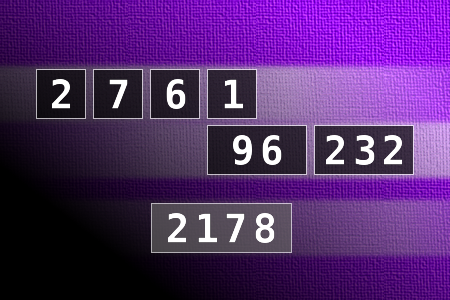Calculate the number 2178
NUMBERMANIA: Calculate the number 2178 using numbers [2, 7, 6, 1, 96, 232] and basic arithmetic operations (+, -, *, /). Each of the numbers can be used only once.Correct answers: 3
#brainteasers #math #numbermania


